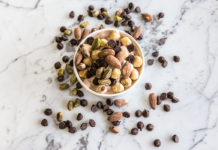Fitting fabrics to peg on your clothing line this summer
Summer is peeping over the horizon, promising warm, balmy days of sunshine. But for many of us, this season is better embodied by long days of unbearably hot temperatures. Being uncomfortable and irritable in your clothes does not have to characterize your next summer. The fabric you choose to wear can imbue you with a sunny disposition this season.
Here are the top six fabrics for your summer wardrobe:

1. Cotton
For more than 7000 years, the cotton plant has been naturally grown as food, fiber, and even fuel. Cotton begins as a flower and is eventually spun and woven into a soft, versatile fabric. Unlike synthetic, oil-based fabrics such as polyester, cotton is breathable.
Check the clothing label to ensure that the garment is at least 60% cotton. This percentage indicates that it is rich in cotton and won’t be stiff and itchy on your skin. Even more importantly, the odors acquired during your daily tasks won’t cling to the fabric when washed. The fabric is easy to maintain. It sheds most pilling in the wash, ensuring it is smooth to the touch.
Cotton keeps its shape and is less prone to stretch. If the clothing label shows less than 5% spandex, there will be minimal chance of stretching. Cotton is a natural fiber and is less likely to irritate your skin, making it a perfect fabric choice for babywear. Always ensure that your underwear contains mostly cotton, no matter what the season. It reduces your risk of yeast infection as cotton absorbs moisture, keeping the fabric dry.
Although this fabric does tend to crease or shrink and takes a long time to dry, it can be recycled, and clothing that is 100% cotton is also biodegradable.
2. Linen
One of the oldest fabrics in the world, linen is produced from fibers of the flax plant. Dyed flax fibers were said to be found in a South-Eastern European cave over 30,000 years ago! It is truly an ancient fabric, used during Biblical times and even in ancient Egypt’s mummification process.
Even though linen is expensive, difficult to manufacture, and can wrinkle easily, there are many advantages to using the fabric. Linen is comfortable, durable, and strong. It feels beautifully cool against one’s skin.
For those with allergies, the hypoallergenic properties will be a significant advantage. When compared to cotton, it dries more quickly and is even more biodegradable.
3. Rayon
Rayon is the copy-cat fabric. It looks like silk and feels like silk, but rayon is actually regenerated cellulose fiber. Basically, it’s produced from natural sources of cellulose, such as wood. The cellulose is dissolved into a solution, and the solution is then converted back into insoluble fibrous cellulose. So it’s a bit of a science experiment that became a versatile fabric, mimicking the textures of silk, cotton, and even linen.
Thanks to the French scientist Hilaire de Chardonnet, who invented viscose, the rayon fabric was eventually created. It is a luxurious type of fabric, ideal for women’s delicate garments and dresses. Rayon can be dyed easily and is more biodegradable than cotton.
4. Denim
Denim has been a much-loved favorite for hundreds of years. The use of denim began in Serge de Nimes, France, and found its overwhelming popularity in the 1850s during the American gold rush. Levi Strauss started making pants for the gold miners, using a strong cotton fabric with a twill weave. They needed to be durable with large pockets to store the gold.
Over the years, the denim fabric has extended to six different types: indigo (dyed indigo), stretch (spandex in the weave), crushed (wrinkled treatment), acid wash (marbled), raw (rough and stiff), and sanforized (treated to resist shrinking).
Denim is timeless and long-lasting. It’s a perfect choice for any season.
5. Merino Wool
Between the 13th and 14th centuries, local Spanish sheep were bred with British sheep, creating the infamous Merino sheep. They became highly prized for their wool all over the world. Compared to regular wool, it’s thinner and softer, forming a comfortable fabric that is easy to wear.
Each wool fiber is the width of a human hair, so the wool does not feel prickly against the skin. It is the perfect fabric for the outdoors as it can regulate the body temperature by wicking moisture away from the skin, expelling unwanted odors.
Even though careful laundering is needed for this high-end fabric, Merino wool has biodegradable properties. It dissolves back into the soil, releasing nutrients and carbon after about a year. Another advantage, especially during the summer months, involves ultraviolet protection. This type of wool helps to block out harmful rays of the sun (UPF 20+).
6. Chambray
During the 16th century, a fabric called ‘cambric’ was created in the French town of Cambrai. It was a lightweight weave, mainly used to make shirts and handkerchiefs. The present-day fabric of chambray has origins in this fabric. Usually light blue in color, chambray has a part in the story of the blue-collar worker.
The term was coined in about 1901 when the US Navy began using denim and chambray in their clothing. This plain fabric with a cotton weave is very similar to denim but thinner and softer in texture. When the label indicates 100% cotton, it will keep you dry in the heat and humidity of the summer months.
Although it does tend to wrinkle, stain removal will prove easy as the cotton in the weave helps to release the odors when the fabric is being laundered.
Conclusion
The key to unlocking your summer wardrobe is breathability. If the fabric has an airy feel and keeps you feeling dry, then that garment is probably one of the Sun-kissed Six. Make sure it’s pegged on your washing line this summer season.











